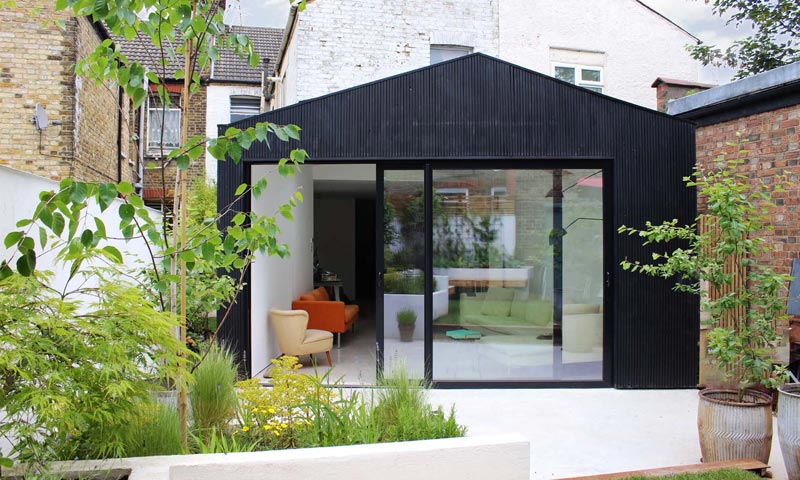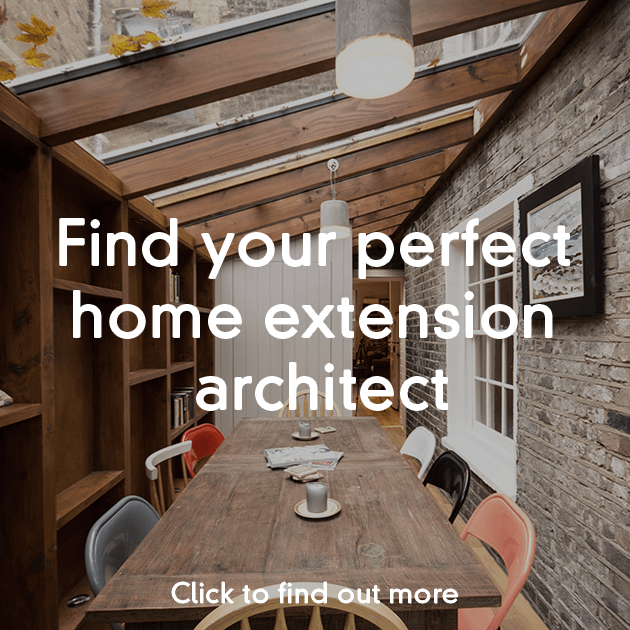A Design and Access statement is a written, often illustrated, document that accompanies your planning application form and drawings.
It provides an opportunity to explain how your design proposal is a suitable response for its site and wider area. It’s only a requirement for major projects, listed buildings or certain householder applications in a conservation area. However, some architects recommend always including one for residential extensions, as they can strengthen the case for your proposal.
Extension above by Matthew, architect in Islington. See his full profile and shortlist him for your project here.
What does a Design and Access Statement include?
How much detail you include in your Design and Access statement will depend on the scale and complexity of your application. Always refer to guidance from your local authority to ensure you include the correct information. You typically need to include the following:
Access
The access part of the document should set out how you will ensure that all users will have equal and convenient access to buildings and spaces.
Design
- Number of units proposed, floorspace and distribution of use.
- Layout design decisions in relation to routes, open spaces, orientation, relationship to other buildings and adjacent streets.
- Scale of the proposal in relation to surroundings.
- Landscaping design decisions. How external spaces enhance the proposal and connect to the site and surroundings.
- The visual appearance in relation to form, style, materials, lighting, colour and texture and how this relates to the surrounding area.
- How your design responds to or affects the local historic environment and heritage assets.
What’s the difference between a Design and Access Statement and a Planning Statement?
A planning statement aims to justify the proposal in planning terms, relating the proposal to local and national planning policy. For large, complex projects, you may decide to include a planning statement separately to your Design and Access statement.
When is a Design and Access Statement required?
In terms of private residential projects, a Design and Access statement is only required for ‘major development‘ (see definition below) OR if the development is in a conservation area or world heritage site and where the proposed development consists of:
- one or more dwellings
- a building or buildings with a floor space of 100 square metres or more
- a listed building.
Definition of ‘major development’
The proposal is defined as a ‘major development’ in article 2 of the Town and Country Planning (Development Management Procedure (England) Order 2015. In terms of residential architecture, this includes:
Do you need a Design and Access Statement for a house extension?
Refer to the guidance from your local authority, but you don’t usually need a design and access statement for:
- extensions to a house (not in a conservation area)
- change of use application (as long as it does not involve any physical changes)
- extensions to non-domestic properties (not in a conservation area) where the floor area to be created is less than 100 sq m
- the erection of a building or structure up to 100 cubic metres in volume and 15m in height (where no part is in a conservation area).
Even if it’s not required, a design and access statement can be very helpful to back up your design proposal. Many architects would recommend including one anyway, to strengthen the case for your proposal.
Work with an architect
Often the best way of understanding the planning process and getting the best outcome is by working with an architect. Simply post your project below and we’ll match you up with the best architects for your requirements. And it’s completely free!
- Quickly see who’s interested in your job.
- Create a shortlist.
- Invite up to three for a no-obligation consultation.
Emily Design for Me

